Column: In Oxnard, a tamale festival persists after becoming husk of its former self
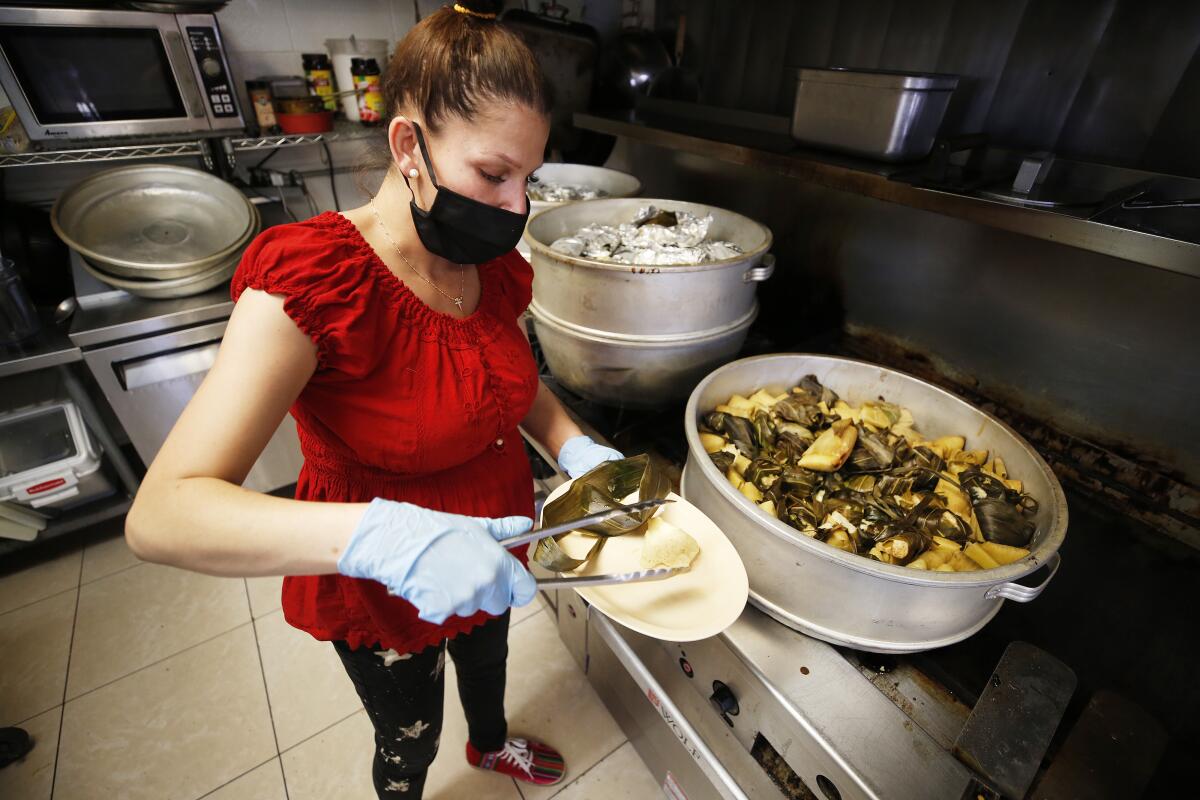
Last Tuesday morning, Yolanda Pina and Liliana Soria set up a table, a pop-up tent, and a banner that read, âOxnard Tamale Festival.â The logo featured a goateed tamale wearing a Santa Claus cap while racing in a Volkswagen Beetle. They set up in front of 8 Regiones Restaurant, the location for the grand finale for the latest installment of the cityâs 14-years-and-running fiesta celebrating the Latin American foodstuff.
In 2019, the Tamale Festival drew more than 10,000 people to downtown Oxnard. Nowhere near that many eaters were going to come by today.
Construction blocked off one side of Ocho Regiones. The narrow streets of La Colonia, the historic barrio where the Oaxacan restaurant stands, made parking nigh impossible. A pre-sale push by the city drew only 41 purchases of a $10 box of four tamales.
It was the second year in a row that Oxnard had relegated its tamale party to a to-go format due to COVID-19.
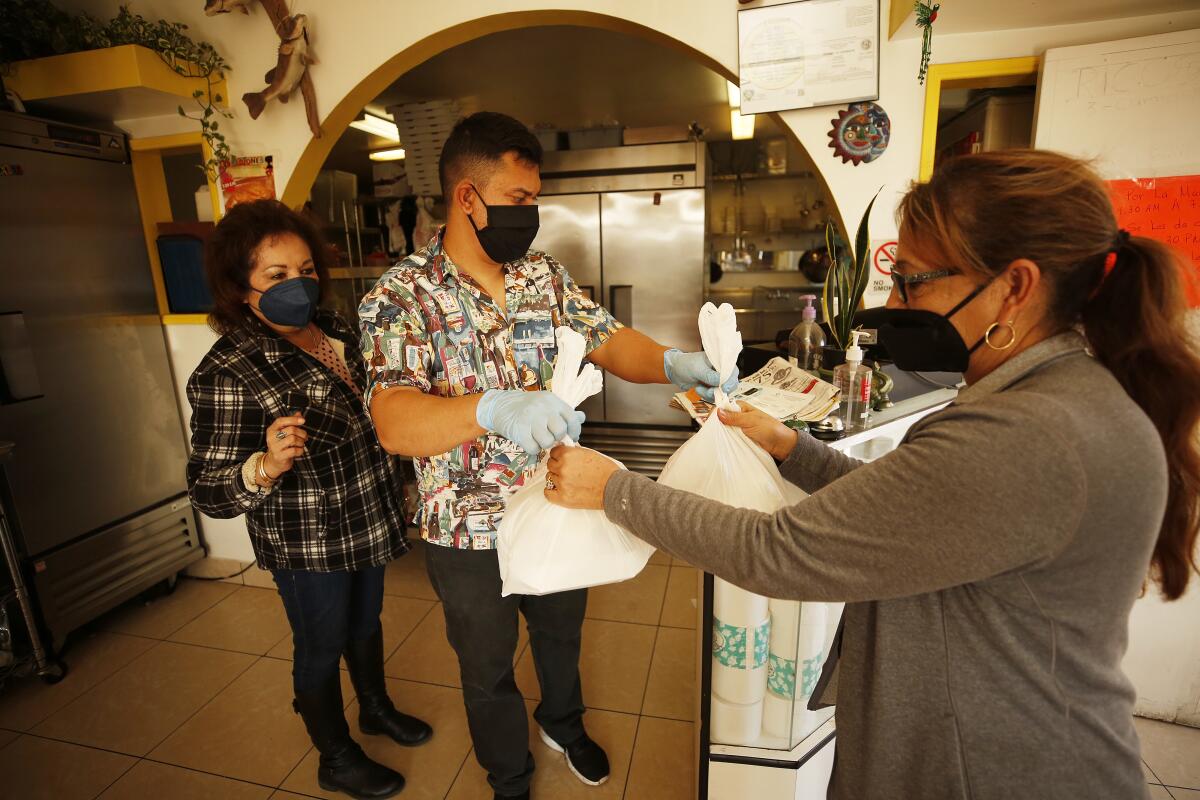
Pina, who has helped to organize the event almost from its start, tried to put a positive spin on the day.
âItâs incredible to know that tamales have been around for 9,000 years and they continue here,â said the lifelong Oxnard resident, who gave her age as âa quinceaĂąera times three.â
Then, she got quiet. âThese places are losing money,â Pina said. âWe want to bring it back to them.â
Tamale festivals are blooming across Southern California this weekend, from Indio to Long Beach, Placentia to Alhambra. All in-person.
The organizers of the city-run Oxnard Tamale Festival refused to rush back to normal.
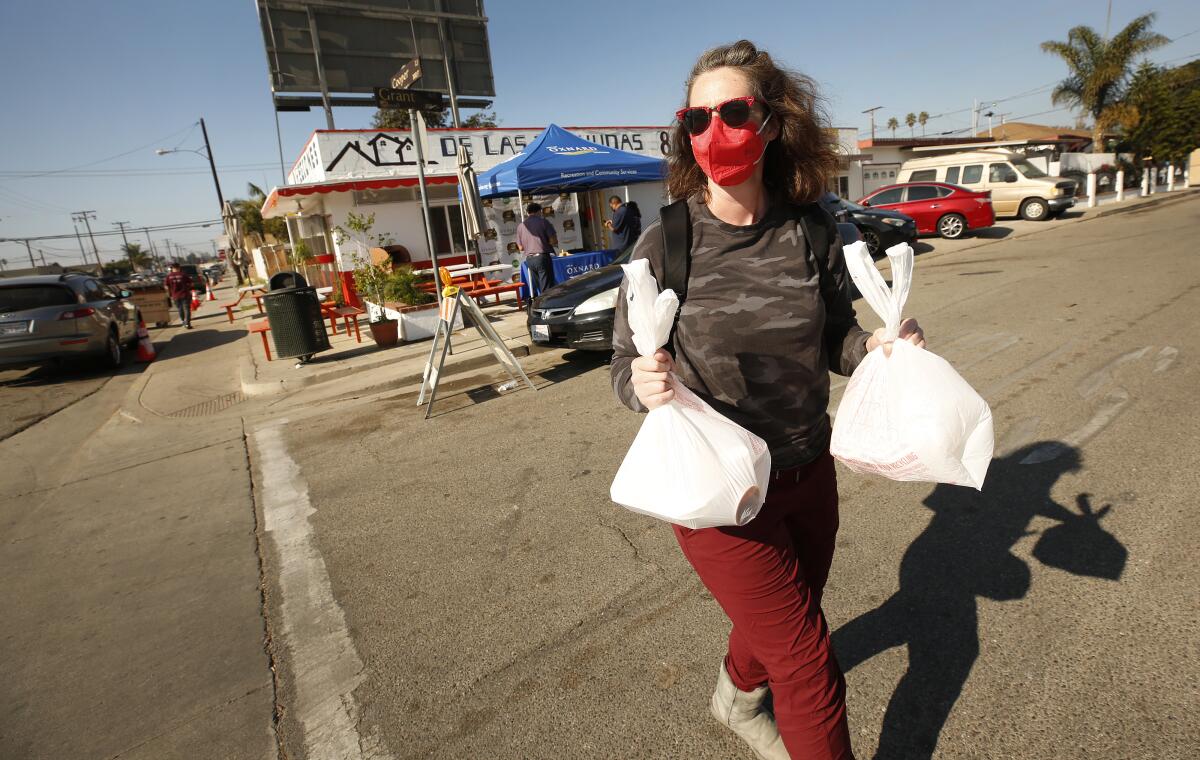
Four months ago, they decided to repeat last yearâs version: Invite four restaurants over four weeks to sell their tamales to go. Pina and her staff werenât particularly happy with the decision â but no one regretted it.
Oxnard was walloped by coronavirus. Its 416 COVID-19 deaths represent 35% of Ventura Countyâs total even though the city has only 24% of Ventura Countyâs population.
So when Oxnard looked at the COVID-19 statistics before them back in July and tried to forecast how they might look in the winter weâre now in, the decision to do only takeout âwas a no-brainer,â said Jessy Tapia, a recreations supervisor for the city and Pinaâs boss.
âWe were hurt hard,â the 33-year-old said. âWeâre still hurting. Tamales is one of the greatest things about the season. But to have an in-person festival right now just so people can get together just didnât feel right. You have to respect the makers and community.â
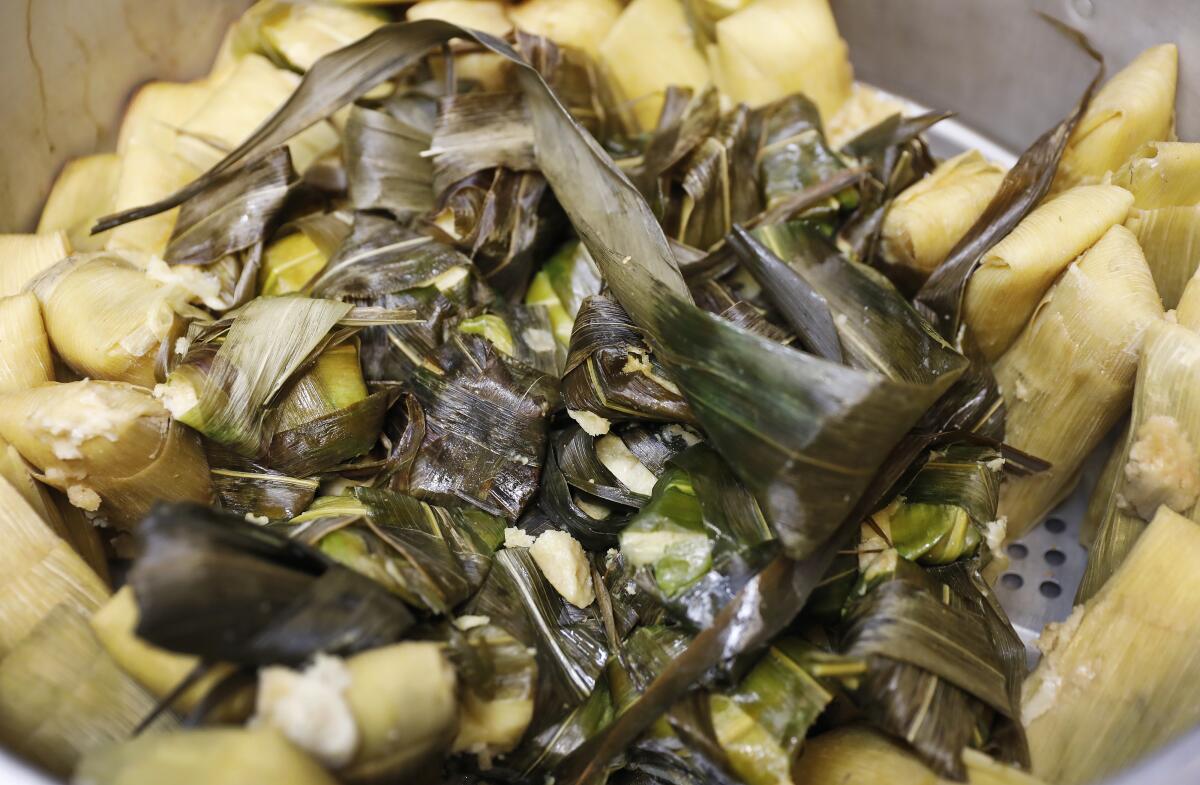
Now, as the Omicron variant blazes across the world, Oxnardâs decision to not have its tamale festival in person no longer feels overly cautious; itâs downright prophetic.
âI have not heard any complaints about us doing it in this fashion,â said Tapiaâs fellow supervisor, Marisue Eastlake. âWho doesnât like a tamale?â
Inside the 8 Regiones kitchen, Francisco and Griselda Vega lorded over steaming pots that held the 200 tamales they were going to sell that day. The husband-and-wife team participated in the festival for the first time last year and won the best tamale trophy, which features a chef wearing a toque and holding a knife in one hand and a fish in another â but no tamales in sight.
In addition to Oaxacan tamales wrapped in banana leaves, the Vegas were also offering two types unique to Griseldaâs native MichoacĂĄn: triangle-shaped corundas, and savory-sweet uchepos.
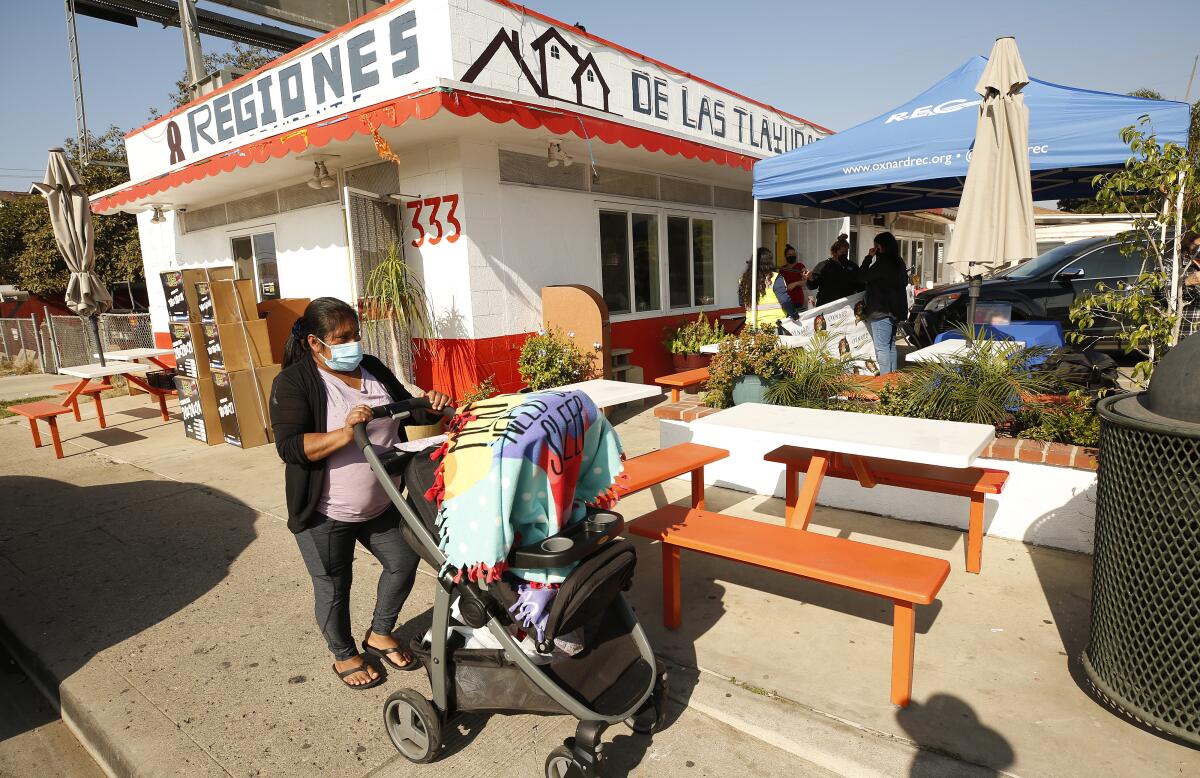
âThe Americans love the Oaxacan ones. The Mexicans not from Oaxaca think that theyâre, well, interesting,â Griselda, 30, said with a chuckle. âI hope they like the tamales from where Iâm from.â
âA lot of people donât know about these, because they didnât grow up with them,â countered Francisco, 32. âBut their minds change once they try them.â
I asked him how 2021 had gone for 8 Regiones.
âItâs been good,â he said. âBut today will help.â
Eleven a.m. rolled around, the official start time for sales. There were no customers. While they waited for someone, anyone to show up, Pina and her co-workers talked â what else? â tamales.
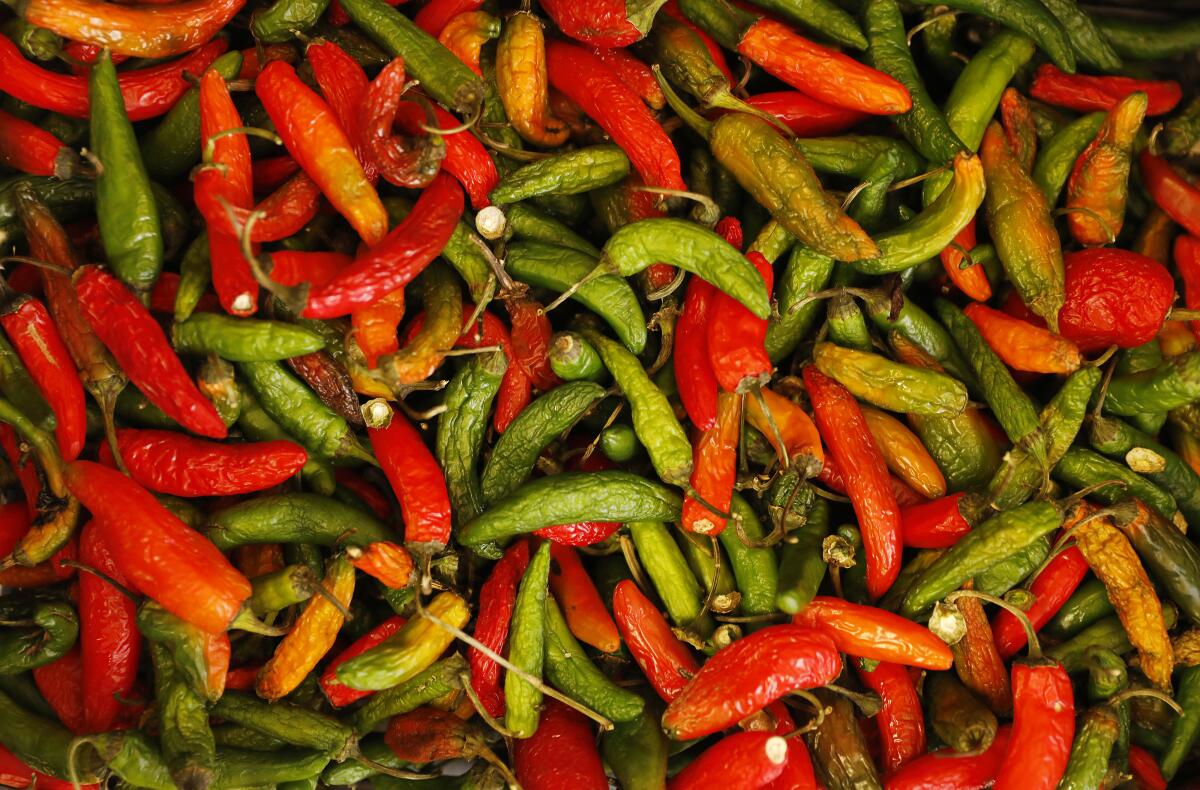
She said one of her favorite things about the Oxnard Tamale Festival is its push to include its namesake from all parts of Latin America, not just the smallish ones wrapped in cornhusks native to northern and central Mexico that have served as the de facto tamale in Southern California since the days of the missions. Pina and others began to reminisce about tamales past: Tex-Mex-style ones stuffed with refried beans, hallacas from Venezuela, humitas from Ecuador.
âI remember the Guatemalan ones,â Eastlake said. âOne of the seniors I work with was so excited to be able to eat home tamales from his home country, I thought he was going to cry.â
âI get my own tamale education this way,â Pina added. âI only grew up with pork ones, but thatâs because my dad was from Jalisco.â
âI donât know how to make tamales,â admitted Soria, 30. âMy mom isnât the tĂa in the family who makes them.â
âI gotta show you, then,â Pina shot back. âI make mine with brisket!â
Suddenly, the first customer of the day arrived.
Sara Cook, a UC Santa Barbara worker, checked in with Soria for her order. She went inside 8 Regiones and left with two bags. âThis is very convenient,â the masked 39-year-old said. âWe need to adapt and grow and change in these times, and they made it work.â
Next up was Jeffrey Carranza, an office manager with the Oxnard School District. âYou canât think of a Latin Christmas without tamales,â the 32-year-old said. âYou unwrap gifts, then you unwrap tamales.â
âI want to support Oxnard, so this was a great way to do it,â said Leslie Mendez, a Wells Fargo employee who swung by during her lunch break.
Customers streamed in over the next three hours. They double-parked, or flashed their hazards in red zones, or stayed in the middle of the street while someone rushed in for their meal. Every time someone came, Pina shouted âÂĄUna mĂĄs!â to the Vegas.
White or Latino, old or young, white-collar or working-class, Oxnard showed up for its Tamale Festival.
âThereâs a part of me that says, âThis isnât a tamale!ââ joked Maricela Ramirez, 65. She held four bags. âI always want them like my mom used to make them. But itâs great to explore the different regions. And itâs great to see how diverse Oxnard is, even among us Latinos.â
After the lunchtime rush cooled down, I put in my order. The corunda was the size of a mega-wonton but was luscious; the two Oaxacan tamales were soft and spectacular. The true star was the uchepo, which is hard to find in Southern California restaurants despite our large michoacano population. The order came with small cups of four condiments: mole negro, jocoque (a saltier type of cream), and red and green salsas that scorched.
I planned to eat just bites of each tamale before heading back home; I ate all of them within minutes.
âThe thought wasnât to cancel the Tamale Festival, ever,â Tapia said before he left. âItâs about helping the community, and tamales do that.â
âBut hopefully, knock on wood, weâll be back to normal next year,â Pina said.
âHopefully, I hope to God,â Eastlake said, âthis is the last time like this.â
More to Read
Sign up for Essential California
The most important California stories and recommendations in your inbox every morning.
You may occasionally receive promotional content from the Los Angeles Times.












